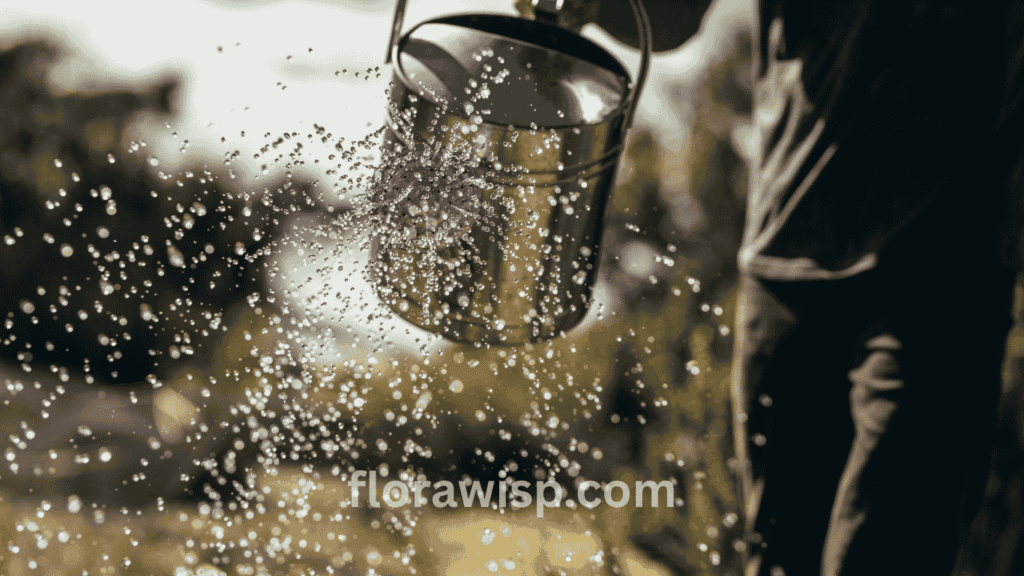Learn how to grow thick Bermuda grass in Texas with 8 expert-backed strategies. Save water, avoid costly mistakes, and create a resilient, low-maintenance lawn. Maintaining a lush, green lawn in Texas heat isn’t just a dream, it’s achievable with the right knowledge and consistent care. Bermuda grass, a warm-season turf known for its durability and drought tolerance, thrives in Texas when given the right conditions. Whether you’re in Central Texas, the Panhandle, or along the Gulf Coast, this guide will help you transform bare patches into a thriving Bermuda carpet. For tips tailored to other regions, check out our guides on Bermuda Grass in Georgia and How to Plant Bermuda Grass Seed.
In This Article
1. Choose the Right Bermuda Grass for Texas Soil

Not all Bermuda grass is created equal, especially in a diverse state like Texas. Tifway 419 and TexTurf 10 are ideal for high-traffic lawns, while Common Bermuda is budget-friendly and widely used. If you’re reseeding, go for certified Bermuda grass seed suited for Texas, which ensures better germination and disease resistance.
In my own experience with Central Texas lawns, Tifway 419 consistently delivers deep green color even during intense summer heat. It’s also more resistant to foot traffic and drought stress, making it a smart choice for active households or those who entertain outdoors. If you’re working with clay-heavy soils or lower-budget needs, Common Bermuda is a great alternative; it may take longer to fill in, but it holds up well once established.
One crucial tip: Always check your local soil type and sun exposure before choosing a variety. Bermuda thrives in full sun, so if your lawn gets less than 6–8 hours of direct sunlight, even the best seed won’t perform well.
2. Timing Matters; When to Plant Bermuda Grass in Texas

The best time to plant Bermuda grass in Texas is between late April and early July, when soil temperatures consistently reach 65°F or higher. Timing your seeding or sodding correctly can mean the difference between a lawn that thrives and one that fails to take root.
I once rushed to overseed in March, lured by an early warm spell, only to face a surprise cold front that stunted germination. Since then, I’ve learned to wait until the soil is truly warm, not just the air temperature. You can check with a soil thermometer or use online soil temperature maps for your region.
Planting Bermuda grass in Texas too early exposes young seedlings to temperature swings and fungal diseases. Planting too late (after July) shortens the growing season, reducing root establishment before dormancy in late fall. For best results, prep your lawn in early spring, then plant between late April and early June. This gives Bermuda grass the full growing season to develop deep roots and withstand Texas’ tough summer climate.
Whether you’re using seed or sod, consistency in watering and mowing after planting is key to ensuring a successful lawn. Keep the area moist, not soaked, and protect the seedlings from foot traffic until well-rooted.
3. Bermuda Grass fertilizer schedule Texas
Start fertilizing in late spring once the grass is actively growing. Apply a nitrogen-rich fertilizer every 6-8 weeks until early fall. Follow the Bermuda grass fertilizer schedule Texas extension offices recommend: April, June, August. Always water after fertilizing to prevent leaf burn. Over the years, I’ve learned that less is often more over-fertilizing and only invites weeds and pests.
Here’s a Bermuda grass in Texas fertilizer schedule that works well across most Texas regions:
| Month | Fertilizer Type | Application Tips |
| March | Pre-emergent only | Prevent early weeds, no nitrogen yet |
| April | High-nitrogen (e.g., 21-0-0)21% nitrogen, 0% phosphorus, and 0% potassium | Apply once grass greens up, water deeply afterward |
| June | Balanced (e.g., 16-4-8) 16% nitrogen, 4% phosphorus, and 8% potassium. | Mid-season boost; monitor for yellowing or thinning |
| August | Low-nitrogen, high-potassium | Supports root health before fall; avoid overfeeding |
| October | None | Stop fertilizing; prep lawn for dormancy |
Pro tip: Use slow-release fertilizers to avoid surge growth and reduce mowing frequency. Stick to early morning applications on dry grass to maximize absorption.
4. Follow a Reliable Maintenance Routine

A successful Bermuda grass lawn in Texas isn’t just about planting it’s about what happens every week after. Mowing regularly, watering smartly, and watching for weeds or pests makes the difference between a so-so lawn and a standout one.
Mow Bermuda grass in Texas once a week to a height of 1.5 to 2 inches. If it grows too tall, it shades its own base, making it prone to thatch and disease. When I first moved to the Hill Country, I skipped a few mowings in July and the lawn went patchy fast. Consistency is far more important than frequency.
In high-traffic areas or clay-heavy soils (like in Dallas or Houston), I also recommend aerating twice a year spring and fall to reduce compaction. Aeration improves water absorption and allows nutrients to reach the roots more effectively.
5. When to overseed Bermuda grass in Texas

Overseeding is a powerful tool for keeping your Bermuda lawn thick, green, and weed-resistant. In Texas, the best time to overseed is late spring to early summer, typically May through early July. This aligns with peak soil temperatures and longer daylight hours, which are ideal for seed germination.
To overseed effectively, start by mowing your lawn shorter than usual (about 1 inch). Then use a dethatcher or metal rake to expose bare spots and reduce thatch. Apply the Bermuda grass seed evenly using a broadcast spreader. Choose a seed blend labeled for “Bermuda grass seed for Texas” to ensure it’s heat-tolerant and disease-resistant.
Water lightly but frequently for the first 10–14 days keeping the topsoil consistently moist is key. As new grass emerges, gradually reduce watering frequency and begin mowing again once seedlings reach 1.5 inches.
I revived a neglected side yard in San Antonio by overseeding in June with a Tifway blend. By August, it was the greenest part of my lawn. The secret? Consistent moisture, good seed-to-soil contact, and early morning watering.
Overseeding Bermuda grass in Texas each year can also outcompete weeds naturally, giving your Bermuda lawn a competitive edge without relying solely on herbicides.
6. How to Care for Bermuda Grass in Texas

Caring for Bermuda grass in Texas takes a proactive and steady approach. The key pillars are routine mowing, smart watering, and timely fertilization all tailored to Texas heat and soil. Mow weekly at 1.5–2 inches, water deeply once a week in the morning, and apply balanced fertilizer during the growing season. Over the years, staying consistent even through intense droughts has kept my Bermuda lawn thriving.
Soil Prep for Strong Roots
Texas soils can vary dramatically, from gritty sand in the Hill Country to dense clay in North Texas. That’s why I always start with a soil test to check pH levels (aim for 6.0 to 7.0) and nutrients. Aerate compacted areas and blend in compost or sand to improve structure and drainage. Taking the time upfront to prep the soil creates deeper root systems and healthier growth down the line.
Watering Smart in Texas Heat
Texas heat can be brutal, but Bermuda grass is built to handle it if watered wisely. The golden rule is to water deeply, not daily. One inch per week, including rainfall, is ideal. Early morning watering reduces evaporation and disease risk. When water restrictions hit, I’ve had success by mowing higher and watering biweekly to help the grass retain moisture and avoid stress.
7. Bermuda Grass Maintenance Schedule Texas
A solid care schedule can make all the difference. Here’s a sample Bermuda Grass in Texas month-by-month plan I follow for consistent results:
| Month | Task |
| March | Scalp lawn, pre-emergent herbicide |
| April | Fertilize, start regular mowing |
| May | Spot treat weeds, deep watering begins |
| June | Fertilize, mow weekly |
| July | Deep watering, check for pests |
| August | Final summer fertilization |
| September | Reduce watering, monitor growth |
| October | Prepare for dormancy |
| November | Final mowing, clear debris |
This routine balances effort with efficiency avoiding unnecessary stress on your Bermuda grass Texas lawn.
8. Bermuda Grass Calendar Texas
Planning ahead reduces guesswork. Here’s a seasonal breakdown:
| Season | Activity Highlights |
| Spring | Scalp, fertilize, seed, and start mowing |
| Summer | Maintain height, water weekly, fertilize mid-season |
| Fall | Reduce mowing, prep for dormancy |
| Winter | Let it rest minimal care needed |
Following a Bermuda grass calendar Texas homeowners can rely on giving structure to your lawn care year-round.
FAQs
Q. What is the best time to plant Bermuda grass seed in Texas?
The best time to plant Bermuda grass seed in Texas is from late April to early July, when soil temperatures consistently stay above 65°F. Warmer soil promotes faster germination and deep root growth. In my experience maintaining Texas lawns, seeding during this window leads to a stronger, more drought-tolerant lawn before winter sets in.
Q. How do I care for Bermuda grass in Texas during summer?
Caring for Bermuda grass in Texas summer means deep watering once a week (about 1 inch), mowing at 1.5 to 2 inches, and fertilizing every 6–8 weeks. From my experience, early morning watering and slightly higher mowing help reduce heat stress. Staying consistent with weed control and monitoring soil moisture keeps the lawn lush, even in triple-digit heat.
Q. When does Bermuda grass go dormant in Texas?
Bermuda grass in Texas typically enters dormancy between late October and early November as soil temperatures dip below 60°F. In a recent Fort Worth lawn project, I noticed full browning by mid-November. During this period, grass stops growing, so it’s best to reduce mowing and stop fertilization. Preparing early helps prevent shock and ensures a healthier green-up in spring.
Q. How often should I fertilize Bermuda grass in Texas?
Fertilize Bermuda grass in Texas every 6 to 8 weeks from late spring through early fall typically in April, June, and August. This schedule supports steady growth and rich color. I’ve found that using a slow-release nitrogen fertilizer during these months keeps lawns vibrant, especially during Texas heat waves. Avoid over-fertilizing, as it can lead to excessive thatch and stress.
Q. What’s the best Bermuda grass seed for Texas lawns?
For Texas lawns, choose drought-tolerant, certified varieties like Common Bermuda or Tifway 419. These seeds thrive in hot climates and handle a range of soil types. In a San Antonio project, Tifway 419 provided dense, carpet-like coverage within weeks. Its durability under foot traffic and fast recovery made it ideal for high-use areas, especially during Texas’ long, dry summers.
Q. When can I overseed Bermuda my lawn in Dallas, Texas?
The ideal time to overseed Bermuda lawns in Dallas, Texas is late spring to early summer, once soil temperatures stay above 65°F consistently. In my work with clients in similar Southern climates, I always recommend waiting until after the last frost. Overseeding too early delays germination, and too late puts new seedlings under heat stress. Always mow low and dethatch beforehand for good seed-to-soil contact.
Conclusion
Building a thriving Bermuda lawn in Texas is part science, part routine, and a whole lot of patience. By understanding your soil, following a seasonal calendar, and making smart choices with water and fertilizer, you’ll create a lawn that stands up to heat and stays green longer. From my own experience as a gardener, the biggest secret is consistency. Stick with it, and your lawn will reward you every season.
References
Texas A&M AgriLife Extension; Bermudagrass Home Lawn Management Calendar
USDA-ARS (via University of Georgia); Tif way (Tifton 419) Bermudagrass Overview
Gardener, M.Sc. Horticulture
Elara Bennet is a gardening writer from Austin, TX, passionate about sustainable lawns and blooms. Read full bio →








